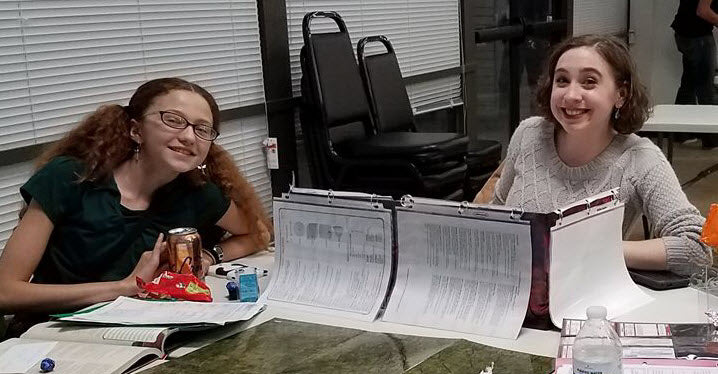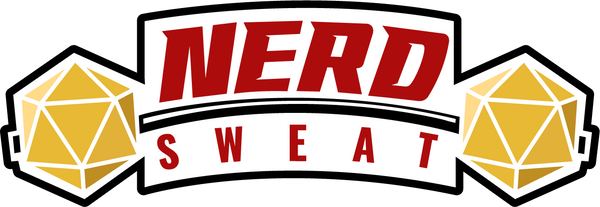
Game On: Designing Simple RPGs for Kids and Beginners in Educational Settings
If you’ve ever seen a child get completely lost in a make-believe adventure, you already know that kids are natural role-players. They love stepping into different characters, exploring imaginative worlds, and solving problems in creative ways. That’s why tabletop role-playing games (RPGs) are a perfect fit for education—they take the natural storytelling instincts of kids and channel them into structured, engaging learning experiences.
But let’s be real: Dungeons & Dragons (D&D) can be a lot for beginners. The sheer number of dice, rules, and character options can overwhelm both young players and first-time educators trying to introduce RPGs. So, how do you design an RPG experience that’s simple, fun, and beginner-friendly? Let’s break it down!
Step 1: Keep the Rules Simple and Intuitive
When designing an RPG for kids or first-time players, the golden rule is simplicity. You don’t need complex mechanics to have an engaging game—just a way for players to make meaningful choices and resolve actions.
Example: The Three-Stat System
Instead of using multiple ability scores like D&D, try using just three broad categories for character stats:
- Might (strength, endurance, physical actions)
- Mind (intelligence, problem-solving, creativity)
- Magic (imagination, charisma, persuasion)
Players can distribute a few points among these stats, then roll a simple six-sided die (1d6) to determine success or failure when using them.
📌 Resource: If you want to see an elegant, rules-light RPG, check out Tiny Dungeon by Gallant Knight Games. It strips down traditional RPG mechanics to the essentials, making it great for kids.
Step 2: Create an Engaging and Relatable Setting
A traditional fantasy setting is fun, but younger players may connect better with something familiar. Think about what excites them—superheroes, space explorers, talking animals, or even a “classroom mystery” where they play young detectives solving puzzles at school.
Example: The Lost Lunchbox Caper
- Players are students at a magical school where someone has stolen the principal’s enchanted lunchbox.
- They must work together, using their Might to chase clues, their Mind to decipher riddles, and their Magic to cast small spells.
- Each challenge they overcome leads to a new clue, eventually revealing the mischievous raccoon familiar behind it all!
📌 Resource: No Thank You, Evil! by Monte Cook Games is an excellent RPG designed specifically for kids, featuring accessible rules and playful storytelling mechanics.
Step 3: Let Players Shape the Story
One of the most powerful aspects of RPGs is that players have agency—the ability to make choices that impact the story. Encouraging this creativity helps build problem-solving skills and confidence.
Example: Choose Your Own Path
Instead of dictating every step of the adventure, present open-ended challenges:
- “The bridge is out! How do you get across the river?”
- “The dragon is sad—what could you do to cheer it up?”
- “The robot guard won’t let you pass without a password. What do you say?”
There’s no single “right” answer—just creative solutions that the Game Master (GM) can reward with progress.
📌 Reference: Educational research from Harvard’s Project Zero emphasizes the importance of imaginative play in developing problem-solving and critical-thinking skills. RPGs naturally encourage these qualities.
Step 4: Make It Collaborative, Not Competitive
Unlike board games where there’s a clear “winner,” RPGs are about teamwork. Encourage players to work together, using their strengths to support each other.
Example: Team-Based Challenges
- A locked door? The strong player can try to push it open, but the clever one might notice a hidden key.
- A dragon encounter? Maybe the brave knight distracts it while the wizard figures out a peaceful solution.
- Stuck in a maze? Players can vote on which path to take, leading to different outcomes.
This fosters communication and teamwork—important skills for both school and life.
📌 Resource: The game Hero Kids is designed specifically for young players and emphasizes cooperative problem-solving over combat.
Step 5: Keep Sessions Short and Reward Creativity
Kids (and even adult beginners) may struggle with long sessions, so keep playtime around 30-45 minutes. Instead of focusing on rigid rules, reward creativity with in-game bonuses.
Example: Creative Rewards
- Making the GM laugh? +1 bonus on your next roll.
- Coming up with a unique solution? Gain a “Lucky Token” to re-roll a bad result later.
- Staying in character? Earn a small in-game item, like a magical flashlight or a talking pet sidekick.
By emphasizing fun over mechanics, you make RPGs inviting and exciting rather than intimidating.
Your Adventure Begins Now
Whether you’re a teacher looking to spice up your lesson plans, a parent wanting to engage your child’s imagination, or a first-time GM introducing friends to RPGs, the key is simplicity, creativity, and collaboration. By keeping mechanics light, crafting engaging worlds, and rewarding storytelling, you can create RPG experiences that ignite curiosity, foster teamwork, and make learning an adventure.
So grab some dice, gather your players, and set off on a journey—who knows what amazing stories you’ll create together? 🎲✨
Game on!
Additional Resources for Beginner RPGs
- No Thank You, Evil! (Kid-friendly RPG) – Monte Cook Games
- Hero Kids (Beginner RPG for ages 4-10) – Hero Forge Games
- Tiny Dungeon (Lightweight fantasy RPG) – Gallant Knight Games
- Roll for Learning (RPG lesson plans for classrooms) – Education With RPGs
Now, let’s roll some dice and start telling stories!
